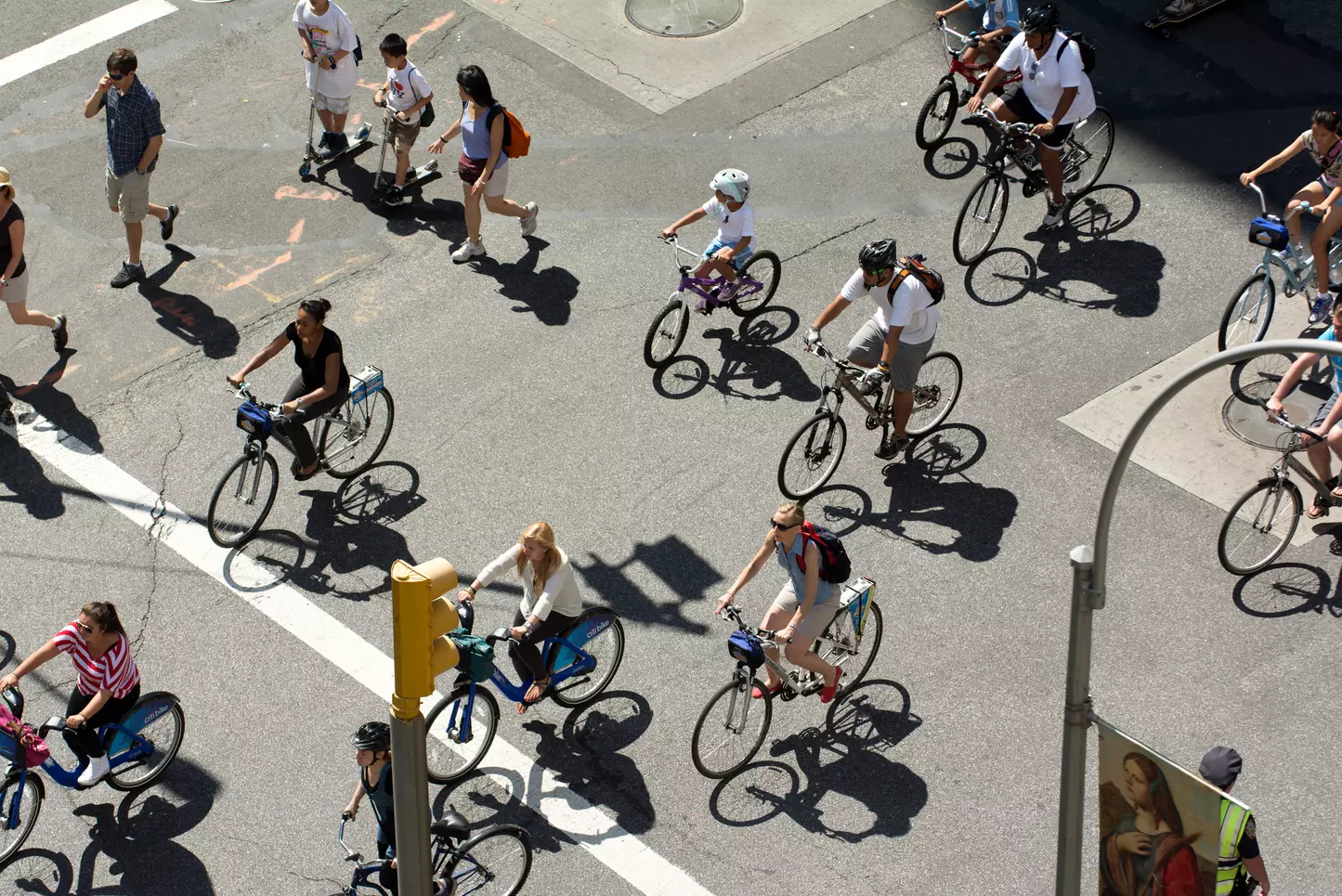Achieving a net zero-emission future, containing global warming within 1.5 °C, protecting biodiversity and building a fair and equitable economy: the System Change Lab study centre has identified more than 70 decisive changes in this direction, for various human activities, of which five key actions concern the transport sector, from which 15% of global greenhouse gas emissions originate.
According to the workshop organised by the World Research Institute and Bezos Earth Fund, these are: ensuring reliable access to modern, safe mobility; reducing avoidable car and plane journeys; shifting to public, shared and non-motorised transport; transitioning to zero-carbon cars and trucks; and transitioning to zero-carbon navigation and aviation. These actions involve 13 objectives, identified through the scientific literature, industry papers and world climate conferences, following the ‘avoid-change-improve’ paradigm.
Ensuring reliable access to safe and modern mobility
Only 52 per cent of the global urban population has safe and affordable access to public transport, which is essential for vulnerable groups (women, children, low-income, minorities, the disabled and the elderly) in the social, economic and cultural life of communities.
Investment in transport brings benefits at every income level. Research in the United States, Brazil, Kenya and Mexico shows that affluent residents have better access to jobs and opportunities due to the location of homes in relation to transport infrastructure. People living in disadvantaged neighbourhoods spend more on transport and take longer to get to their destination, and in the US there is already a gap in access to the electric charging network.
Ensuring reliable access to safe and modern mobility is one of the UN Sustainable Development Goals. Road safety also remains important in a decarbonised world. The UN target of halving the number of deaths and injuries by 2030 (17 per 100,000 people in 2019) calls for accelerating ten times over the progress of recent years.
Reducing avoidable journeys by car and plane
Private car ownership has been central to many transport systems. In the busiest cities in the US, 48% of car journeys are less than three miles long, and GDP growth in emerging countries is driving up ownership as a status symbol. Traffic leads to the construction of bigger roads and motorways, triggering induced demand and, without change, there will be 2 billion cars on the road by 2050.
As a result, car trips increased from 39% to 44% of the total (distance travelled/passenger) between 2015 and 2020, in contrast to the 34-44% target for 2030.
Instead, urban planning can promote sustainability and encourage less carbon-intensive modes of transport; a car-free system must be created (e-scooters, bicycles, walking paths, public transport). This includes the ‘City of 15 minutes’, a better sharing system, private car taxes, congestion pricing, parking fees, reinvesting funds raised in public transport and teleworking.
Shifting to shared, non-motorised public transport
Building infrastructure does not guarantee that it will be used, but it is a necessary condition towards better mobility, not to mention that every dollar invested in public transport generates five in economic return. As services and infrastructure, for example, the rapid transport system (metro, trams and bus lanes), needs to grow 6x faster to get people to leave their cars at home.
Cyclists produce 84% less CO₂ emissions and active mobility and micro-mobility solutions could eliminate 50-70% of short car journeys (0-5 km). The limited availability of protected trails, weather conditions, topographical challenges and unfavourable social perceptions have blocked the widespread adoption of these solutions. Making roads safe will be essential, but to achieve the 2030 target (2 km of protected roads/1,000 inhabitants), progress must be 10x faster.
Transition to carbon-zero cars and trucks
Seventy-two per cent of greenhouse gas emissions in transport come from roads (2020), but the market in China, Europe and the US is about to change. The share of electric vehicles sold was 9% in 2021 (8.7% light commercial vehicles), and the forecast is 23% for 2025. In any case, further action is needed to reach 75-95% share by 2030, in a 1.5 °C scenario.
HGVs are most challenging to decarbonise. Governments could incentivise research and offer subsidies for the initial adoption of these vehicles, which face technological limitations such as battery energy density and recharging times (0.2% of electric vehicles sold in 2021). The share of electric buses sold was 44 per cent of the total in 2021, but large part in China, which also concentrates almost two thirds of the global charging network (1.76 million points in 2021).
The automotive sector will not be able to leave behind 2.4 million workers who will need reskilling or outplacement, while the increase in demand for raw materials has caused an increase in allegations of human rights violations in the metal and mineral extraction sector, from 11 to 61 cases in 2010-2021.
Nautical and aviation transition to carbon-zero
Shipping and commercial aviationcontribute 16% and 4% of GDP to the global economy. Seen as 'hard to decarbonise', both contribute 3% of CO₂ emissions, but the green future of these two sectors is expressed in two acronyms: SAF and ZEF.
Sustainable Aviation Fuel constituted less than 0.1 per cent in 2020 (expected 13-18 per cent in 2030 and 78-100 per cent in 2050), but airlines have signed agreements to buy 21 million tonnes in a delivery period of six months to 20 years. A coalition of 71 companies is supporting the acceleration to expand the knowledge base in this area.
There are about 200 pilot and demonstration projects to develop Zero Emission Fuels (synthetic, from green hydrogen and captured CO₂, e-methanol and Fischer Tropsch liquids), which have not yet entered the industry.
